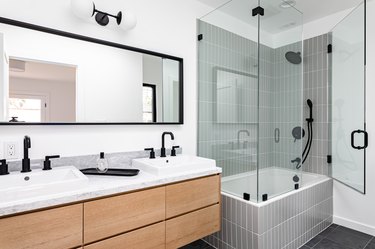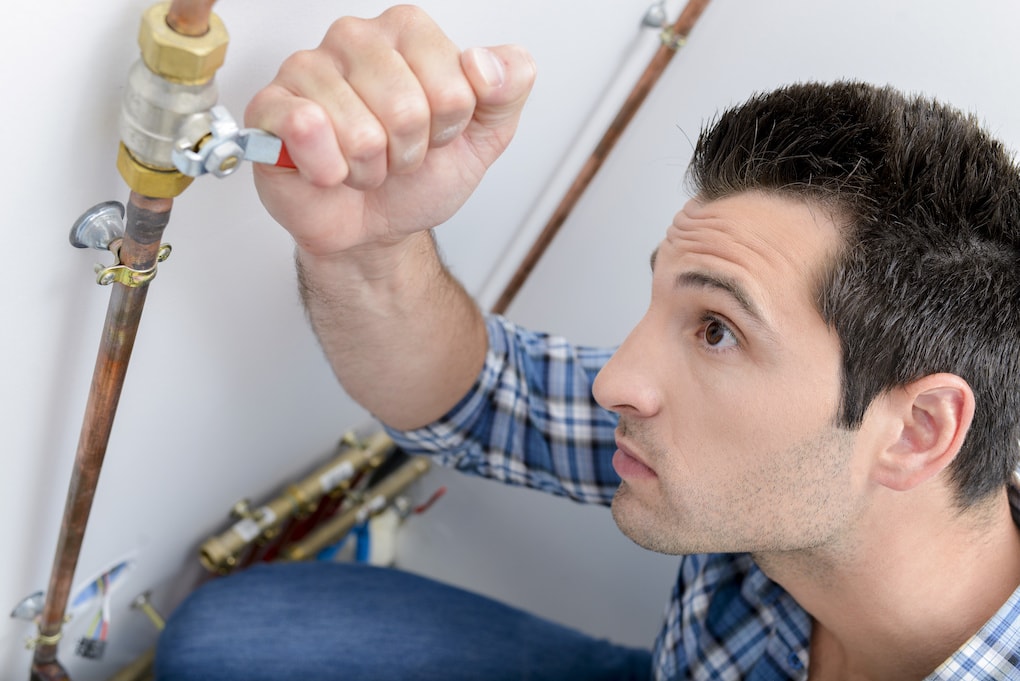Rising Developments and Advancements in Plumbing: What's Coming
Rising Developments and Advancements in Plumbing: What's Coming
Blog Article
We have uncovered the article pertaining to The Future of Plumbing: Trends and Innovations to Watch listed below on the internet and figured it made sense to share it with you here.

Introduction
The pipes sector is undergoing a transformative phase driven by technical developments and expanding problems for sustainability and performance. This write-up checks out arising patterns and developments shaping the future of plumbing.
Smart Plumbing Systems
Incorporating wise technology right into pipes systems makes it possible for remote surveillance, leakage discovery, and automated upkeep. Smart sensors and IoT (Web of Things) devices enable property owners and plumbings to keep an eye on water use and identify problems in real-time, causing more effective resource monitoring and aggressive upkeep.
Water Efficiency Solutions
With enhancing emphasis on water preservation, innovative services are being developed to reduce water wastefulness in pipes systems. High-efficiency components, greywater recycling systems, and clever watering controllers are among the modern technologies aiding consumers reduce their water footprint while keeping comfort and comfort.
Lasting Materials
The shift towards sustainability includes pipes materials, with an expanding choice for environmentally friendly choices. Naturally degradable piping products, such as PEX (cross-linked polyethylene) and HDPE (high-density polyethylene), offer durability and resistance to deterioration without jeopardizing environmental honesty.
Predictive Maintenance
Anticipating maintenance strategies leverage data analytics and artificial intelligence algorithms to anticipate and prevent plumbing problems before they happen. By examining historic information and performance metrics, predictive upkeep algorithms can recognize patterns and anomalies, enabling proactive interventions to prevent expensive repair services and disruptions.
Enhanced Reality in Plumbing
Enhanced Fact (AR) technology is changing pipes by giving service technicians with real-time visual advice for repairing and fixing jobs. AR-enabled wise glasses or mobile applications overlay electronic details onto the physical setting, assisting plumbing professionals envision pipe formats, recognize surprise leakages, and perform repair services with accuracy.
Influence of 3D Printing
The introduction of 3D printing has actually introduced new possibilities in producing plumbing components. From custom-made fixtures to detailed pipe installations, 3D printing permits fast prototyping and on-demand manufacturing, decreasing lead times and enabling higher customization in plumbing design.
Health And Wellness Features
In reaction to enhanced worries for health and safety, plumbing components are incorporating features such as antimicrobial surfaces, touchless operation, and self-cleaning mechanisms. These technologies not only enhance health but also promote customer convenience and comfort.
Hygiene-focused Components
Touchless faucets, self-sanitizing bathrooms, and antimicrobial surfaces are becoming increasingly prevalent in household and business settings, minimizing the risk of bacterium transmission and promoting a cleaner, healthier setting.
Water Quality Surveillance
Innovations in water quality monitoring technologies allow home owners to keep track of the purity and safety of their water supply in real-time. Smart water top quality sensors can spot impurities, pH levels, and temperature variants, encouraging individuals to take positive actions to ensure water security.
Remote Plumbing Services
Remote diagnostics and digital support are changing the means plumbing services are delivered. Through video conferencing and remote accessibility innovations, plumbing professionals can fix concerns, offer support for DIY fixings, and even do remote inspections, supplying greater ease of access and comfort to home owners.
Challenges and Opportunities
While pipes innovations hold immense assurance, they likewise present difficulties such as information privacy concerns, regulative compliance, and the need for labor force training. Attending to these difficulties calls for collaboration between industry stakeholders and regulatory bodies to make certain safe and liable application of new modern technologies.
Governing Landscape
Regulative structures play a crucial role in shaping the adoption of plumbing developments, with requirements and codes controling everything from water effectiveness to product safety and security. As modern technologies continue to advance, governing bodies should adjust to make sure consumer defense and ecological stewardship.
Future Expectation
The future of pipes is identified by proceeded advancement and assimilation with other industries such as IoT, renewable energy, and structure automation. By embracing lasting practices, leveraging arising technologies, and prioritizing user-centric design, the pipes industry is positioned to attend to the developing requirements of society while decreasing its ecological impact.
Conclusion
To conclude, the future of pipes is defined by a convergence of technology, sustainability, and user-centric style. By welcoming smart solutions, sustainable materials, and aggressive upkeep practices, the pipes market can improve effectiveness, promote safety, and add to a much more sustainable future.
Plumbing Industry Trends You Need To Know
Smart technology in plumbing
Homeowners want to be able to manage their homes from their phones. The technology exists to make that happen. From smart toilets to leak detector devices, the whole plumbing system can be managed on an interconnected network made up of sensors, IoT devices, and machine learning algorithms.
This allows for wireless control to turn appliances on and off, automate routines, and access advanced monitoring to track water usage and flag potential issues. Smart technology streamlines water consumption, maintenance and energy usage, creating a more efficient system.
Green plumbing
The data analysis possible with smart technology not only improves convenience and cost-effectiveness but also fulfills a high-priority customer desire – sustainability. Consumers are very aware of their impact on the planet and want plumbing solutions to reduce damage and support sustainability. Eco-friendly plumbing solutions are already starting to emerge.
Customers can opt for low-flow toilets, water-saving faucets, and connections to sustainable energy sources. Beyond monitoring water consumption, customers can conserve water through the installation of greywater systems. This is a system that collects water that has been used but is still clean enough for some household uses such as toilet flushing.
Shorter product pipeline
To keep up with modern plumbing, plumbers need modern tools that enable them to complete jobs more efficiently. One technology making strides in this area is 3D printing. By 3D printing key plumbing fixtures, plumbers can reduce wait times even for specialized fixtures. It minimizes delays often seen in traditional manufacturing that frustrate customers and prevent plumbers from taking on more work.
Off-site repairs
Augmented reality is making a splash in many industries including plumbing. Plumbers can map a building online so they can explore the plumbing system through augmented reality, identifying areas of maintenance and repair completely digitally. This technology can be applied quite widely in plumbers’ work including planning installations and training new recruits. It’s safer, smarter and more efficient.
Low-footprint materials
Another way for plumbing companies to reduce their environmental footprint and meet the customer demand for sustainability is by using recycled materials in their work. The products they source and manufacture such as pipes, fixtures and faucets can be made from recycled materials. This saves the planet while being just as effective.
Onsite water purification
Additionally, plumbing companies can be advocates of water conservation and ease the financial and environmental concerns of customers by offering water purification systems. New water purification technology such as reverse osmosis systems and UV systems make it possible for homeowners and business owners to thoroughly cleanse water, removing contaminants onsite. This means the water can be safely reused in more ways than greywater can be, establishing a water recycling loop.
Tankless water heaters
Another innovation of modern plumbing is tankless water heaters. The idea is that the water is heated on demand as it runs through the system instead of being heated in a water tank. This is more energy efficient and therefore cost-effective and eco-friendly because water isn’t heated needlessly.

Do you really like reading about Innovative Plumbing Trends Transforming Construction? Try to leave a remark below. We'd be glad to find out your suggestions about this content. We are looking forward that you come back again in the near future. Those who enjoyed reading our blog entry please be sure to pass it around. I am grateful for your time. Please stop by our website back soon.
Call Report this page